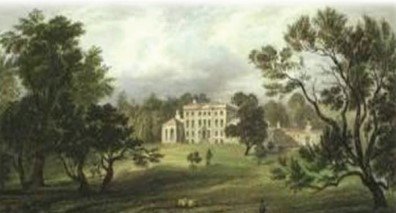
Mistley
Mistley retains much of its Georgian character from the time of Richard Rigby who had lavish plans to turn Mistley into a spa town. Rigbys plans never came to fruition, despite engaging the famous architect Robert Adam, when money ran out after Rigby was disgraced because of the mismanagement of his position as Paymaster of the Forces.
Mistley Towers and the Swan Fountain are perhaps the most notable remains of Adam's work.
-

The Rigbys
The Rigbys arrived by chance by 1705 when Edward inherited the neglected Mistley estate. Before the end of the century, they had transformed it into a flourishing estate, village, quay, and port.
-

Hopton Bridge
There are two things people need to know about the bridge on ‘The Walls’ in Mistley, the first is the ornamental lake behind it was not there in the days of Matthew Hopkins and the second, its name was originally ‘Hopton’. We know this from an extraordinary legal case that started in the late 16th century - fought to decide who was liable for expensive repairs needed at this strategic crossing point.
-

Matthew Hopkins
Matthew Hopkins moved from Gt Wenham in Suffolk to the Parsonage at Mistley Heath with his widowed mother when she married the Rev. Thomas Witham, whose wife had also died leaving a young family. Hopkins later became involved with the torture and persecution of local women who were forced to confess to acts of Witchcraft before being tried at Chelmsford and executed. Hopkins later used these methods of torture back in Suffolk
-

History of Mistley Shelter
Recently restored, the public shelter on The Walls at Mistley was first opened in 1938…
-

History of Mistley Hall (ACORN)
This is the history of the third Hall of the Mistley manor, known now for being the home of ‘Acorn’ Village off the Clacton Road.
Built by the Page family who brought the old Kitchen Garden at the sale of the Rigby estates in 1845 at a time of change, not least in the road layout around the old and New Halls.
-

The Foreman's House
Just into Mistley, along The Walls, is the Foreman’s cottage. Why it is so named is a bit of a mystery but tied up with the history of Wherry Corner, the Norman and Brooks family and their maltings, now part of the estate of Kiln Lane.
-

The Trinity Guild Land
One way that the money was found to build St Michaels & All Angels chapel that once stood in the middle of Manningtree High Street and to pay a curate, was for the lord of Mistley manor to give over land and the rent it generated, to the Fraternity or Guild of the Holy Trinity.
-

Gresham House and Lodge
The history of Gresham Place and Mistley Lodge.